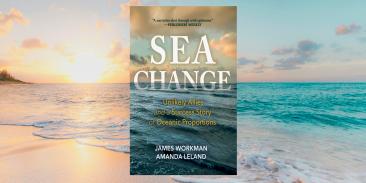Electronic Monitoring of Commercial Fishing Gets Green Light on the West Coast
New Program Could Set Model For Implementation In Other U.S. Fisheries
(Vancouver, WA – April 15, 2016) This week the Pacific Fishery Management Council voted to allow three West Coast commercial fishing fleets to employ camera-based electronic monitoring (EM) systems. Beginning in 2017, commercial fishing vessels can substitute cameras for human observers. This move will simplify logistics, reduce costs and increase profits for fishermen.
As of 2017, the fixed-gear, shore-based whiting trawl, and mothership catcher vessel fleets will no longer be required to carry human observers on fishing trips, as they currently do under the “full accountability” fishery management system that regulates these fleets.
Some 26 vessels have been piloting the EM system since 2015 under exempted fishing permits (EFP). The total number of vessels eligible to carry cameras based on this decision could be as many as 45. Council action for bottom trawl vessels will take place in 2017.
“This is precedent-setting because it’s the first Council-authorized electronic monitoring system to move from pilot project to full implementation in U.S. waters for purposes of catch accounting,” said Shems Jud, pacific regional director for Environmental Defense Fund’s Oceans Program. “The Council’s decision culminates several years’ worth of work by fishermen, the Pacific States Marine Fisheries Commission, Council staff and NGOs. This decision represents a watershed moment in fisheries co-management in this region, and may serve as a model for others.”
West Coast groundfish fleets have been operating with 100 percent observer coverage since the groundfish IFQ program launched in January 2011. Logistical challenges, uneven availability of observers and shoreside monitors, and high observer costs shouldered by fishermen have been a significant source of frustration among the fleet.
Under the “optimized retention” approach adopted by the Council, fishermen’s logbook entries will be the primary data source, and they will be checked against the videos by authorized third parties.
“What this decision does is transfer responsibility for catch accounting from the federal government to vessel operators, where it should be,” said Heather Mann, executive director of the Midwater Trawler’s Cooperative, an Oregon-based organization representing 18 whiting vessels. “Skippers will use their logbook to track their catch, and electronic monitoring is there to verify that their logbook is accurate. This decision is a long-overdue acknowledgement that West Coast groundfish fishermen are responsible stewards of their fishery.”
With more than 3 million members, Environmental Defense Fund creates transformational solutions to the most serious environmental problems. To do so, EDF links science, economics, law, and innovative private-sector partnerships to turn solutions into action. edf.org
Media Contact
Latest press releases
-
Report: Clean Energy Manufacturing Investments Dropped $3.4 Billion Last Month
November 20, 2025 -
IL Regulators Slash Nicor, Ameren Rate Hikes
November 19, 2025 -
Trump Administration Illegally Extends Michigan Coal Plant a Third Time, Despite Staggering Financial Losses and Breakdowns
November 19, 2025 -
New Report Shows How States Can Fund Home Buyouts as Federal Resources Shrink
November 18, 2025 -
Groups Ask Court for Preliminary Injunction in Lawsuit Challenging Unconstitutional Cancellation of Clean Energy Funds
November 18, 2025 -
Trump Proposal Will Dismantle Wetlands Protections, Increase Flood Risk
November 17, 2025











